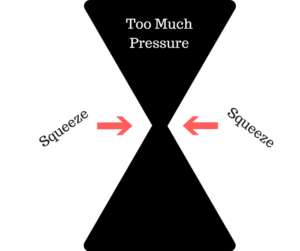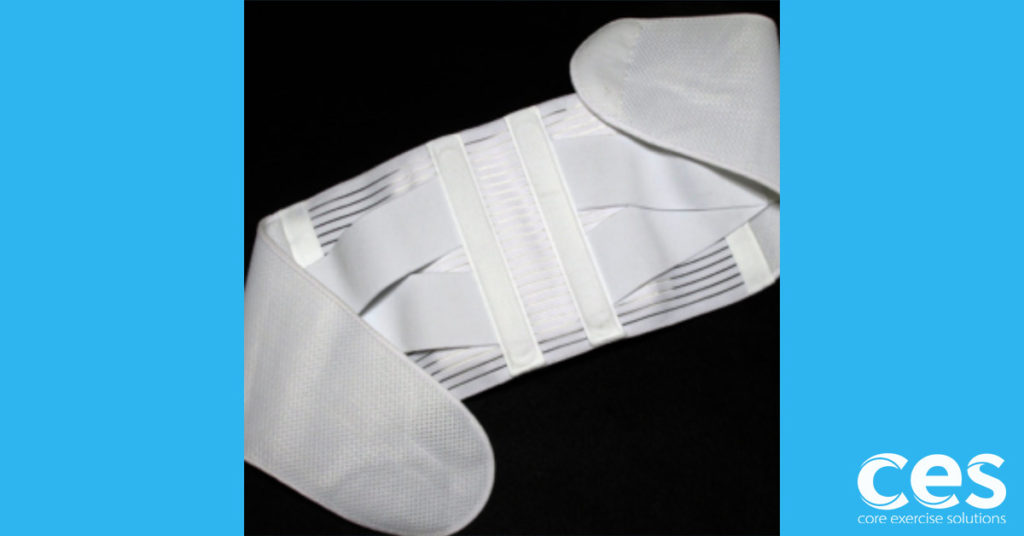To bind or not bind. What does your belly have to say?
Are you considering getting a binder to help your core postpartum? Maybe you have a diastasis (abdominal separation) and heard it helps. Here are a few things I want you to consider first.
The goal postpartum (or anytime, really) is to promote optimal movement and function in your body.
Does an abdominal binder help us do that?
That is what I want to take a closer look at because the answer is not as black and white as it may seem.
In some cases, it’s a good idea. After my first child, I would have laughed at anyone who suggested a binder. Ha! My core felt back to normal pretty quickly. But, after the second, it was a whole different story. For some ligament laxity increases with each baby. Your body just gets more and more efficient at getting those little sweet things out of you. So, as things stretch out repeatedly, it can be harder and harder to get them to “bounce back” each time. That may be the perfect use for a binder. Immediately after the second, I literally felt like my guts were going to fall out. I desperately wanted a little support. So, I grabbed a binder and it did help me feel more secure. Is this something I would recommend for every postpartum woman? Heck no. And here is why.
I think in the long run a binder can cause more harm than good for some women if worn too long. You have to know when to ditch it. I wore one for about 5 days. By the end of the week, I was starting to get back a little core control, so instead of continuing to wear the binder, I wanted to give my body a chance to function naturally. (Note here that I was wearing it for core control. Not to flatten my belly and look like I'd not had a baby!)
When is a binder best used:
Immediately postpartum, up to 2-6 weeks
Longer use during an extremely severe diastasis with the presence of back pain (although, you might want to experiment with some kinesio tape instead. Keep reading to find out why.)
Why might a binder be bad?

It creates too much compression. I’ve seen women cinch those things down like they are trying to go from pregnant to size 2 waist in a week. This is bad for so many reasons but a primary one is pressure down on your pelvic floor and up into your esophagus. When we put too much pressure inward on our core, it forces pressure up and down. Makes sense, right? Squeezing something in the middle makes the ends bulge. Nobody wants bulging ends! Prolapse and hernias are the results of too much pressure, and they can be avoided by learning how to manage pressure properly. We certainly don’t want something squeezing tight in the middle to mess up this perfect pressure system.
It disrupts our normal breathing pattern. When we inhale, air fills our lungs and our belly, back, and sides expand accordingly as our diaphragm contracts down into the abdominal cavity space. What if you are wearing a binder? This pretty much stops deep breathing in its tracks, which forces you into a shallow breathing pattern. Shallow breathing can increase cortisol which can literally stress you out! No wonder those women back in the day wearing corsets were so uptight. LOL. Their body thought it was being chased by a tiger, staying on constant alert all day. When you breathe, you must be able to expand your midsection. The bottom line, a binder stops this expansion. Learn more about breathing here.
It triggers a reaction from your core. I know, I know. You are thinking, Sarah, isn’t this a good thing? Well, unfortunately, it’s not. A constant reaction from our core is not a good thing. I often see two different reactions from our core muscles.
#1. Constant drawing in. This is bad because it shuts down our breathing system like we already discussed, but it also causes most women to contract their pelvic floors. This is not a good kind of contracting because the pelvic floor needs a natural ebb and flow, a contracting and relaxing to function correctly. I can’t tell you the number of patients I’ve told to relax and when they stop gripping their pelvic floor, that alone HELPS their pelvic floor issues. A constant contraction of anything in the body is a bad thing. This holds true for your abs, as well. I’ve seen plenty of diastasis issues in people that draw in their belly button constantly. This is not how the body is meant to work and drawing in your belly button is certainly not going to heal your abs.
#2. Pushing out. Maybe you have the opposite reaction and it stimulates you to push out against the binder. You may not even realize you are doing this but that’s one of the reasons weight lifters wear abdominal braces, to give their abs something to brace against. This bracing creates tremendous amounts of pressure within the core. Which brings us back to hernias and pelvic organ prolapse, not to mention more pressure out on the diastasis even though you are wearing the brace. (I see this with babywearing too.)
Training for function… when a crutch becomes a bad thing. I look at abdominal binders the same way I do any crutch for the body. Pessaries. Shoe Orthotics. Etc. These are devices created to help assist our bodies in functioning correctly.
Now, before you get all angry at me about how your orthotics have saved your life, I’m not throwing out the baby with the bath water. All I’m asking is for you to look at this a little bit differently, it’s not so cut and dry as it first appears. There is a time and place for things that help support us. Then there is a time and place to wean ourselves off of those support devices because most support devices hinder natural function. Now, I’m not saying go cold turkey (and by all means, please get help and advice from someone that knows what they are doing). Just look at all those people that decided they would go from wearing Brooks Beasts to Vibram Barefoot shoes and ended up breaking bones in their feet. Yep, let’s be smart about this and think long term. How can I help support my body for lifelong strength? How can I create natural core functioning that allows me to lift heavy things? (Have you ever picked up a car seat with a baby in it? Yep, postpartum women need to be strong! We need to be able to lift heavy things just to function in life.)
Those are the questions you need to be asking yourself.
What happens when you take the binder off? Will your core know how to work properly or will your diastasis open right back up? Did you change how your body moves and functions or did you simply add a brace? We are really good at putting a bandaid on things. We are really good at taking the easy way out. Fixing posture. Increasing awareness. Learning the correct exercises to do. Now, that’s way harder than strapping on a brace.
So, in review. Abdominal binding is not bad. There can be a time and place for it, but it’s not right for everyone and it’s certainly not right for long term core strength and creating an unstoppable body that knows no bounds for optimal function!
If you want to learn the posture, movement awareness, and core strengthening exercises I mentioned, check out the Diastasis Fix. It’s a 6 week program that will take you from ground zero to confidence in your abs!
Try This Free Diastasis Recti Educational Series
Dr. Sarah Duvall, PT, DPT, CPT, and the CES Team have helped thousands of women create the strength and stability needed to overcome diastasis recti and build core strength.
Join us today for this 4-part Diastasis Recti Video Series, absolutely free.
We don't spam or give your information to any third parties. View our Terms of Use and Privacy Policy.

